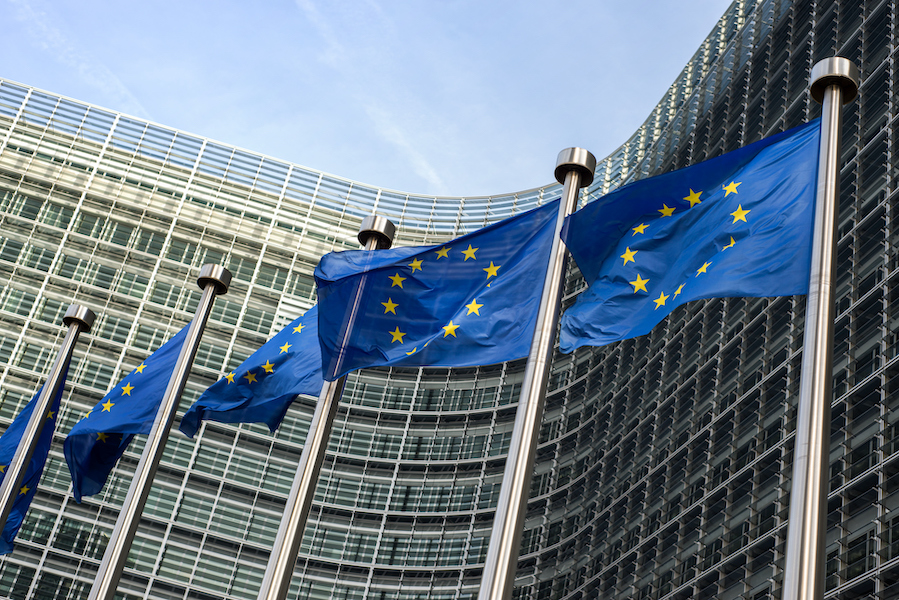
The head of the European Central Bank reiterated Thursday that the bank would raise interest rates “some time after” ending its pandemic stimulus efforts later this year, sticking to a gradual path even as the United States, United Kingdom, Canada and other countries take a harder line to combat soaring consumer prices.
People in the 19 countries that use the euro currency have seen costs increase for everything from food to fuel as inflation rose to an annual rate of 7.5% last month, the highest since statistics began in 1997.
Driven by energy prices that have soared ever higher since Russia invaded Ukraine, record inflation has sharpened attention on when the European Central Bank will take more drastic steps to control excessive price increases for consumers.
The bank said recent economic data confirmed its expectations of ending its pandemic stimulus efforts later this year and that the exact timing would depend on the economic situation.
Bank President Christine Lagarde, who previously opened the door a crack for an interest rate increase this year, said “we are sticking to our sequence,” with any rate hike following the end of the bond purchases meant to support the economy during the Covid-19 pandemic. That could mean “anywhere between a week to several months,” Lagarde said, before the bank could decide on “an interest rate hike and subsequent hikes.”
Speaking by video news conference after testing positive for Covid-19 last week, Lagarde stressed the uncertainty over the war and the bank’s willingness to stay flexible in adjusting its policies, saying the experience with pandemic stimulus purchases showed “flexibility served us well.”
She noted that inflation “will stay high in the near term and then moderate to some extent” amid uncertainty from the war. While higher energy prices were fuelling inflation, weaker growth could lower the price pressures in the economy, Lagarde said.
Her comments suggest the bond purchases will end in July followed by a first interest rate increase in September, said Carsten Brzeski, global head of macro at ING bank. He called it “normalization at a snail’s pace” after large doses of stimulus applied during the depths of the pandemic.
The war has sent inflation surging to unexpectedly high levels. Prices for oil and gas have been rising on fears of a cutoff from Russia, which is the world’s largest oil exporter, and as the recovery from the pandemic increases demand for fuel.
As inflation grows worldwide, the U.S. Federal Reserve hiked its benchmark short-term rate last month and indicated it will continue raising it sharply this year. The Bank of England has raised raised its key interest rate three times since December. On Wednesday, the Bank of Canada raised its benchmark rate by half a percentage point to 1%.
Lagarde said the European and U.S. economies were not comparable. One reason is that “the euro area is going to be more exposed and will suffer more consequences as a result of the war by Russia against Ukraine … comparing our respective monetary polices is comparing apples and oranges.”
Economists say much of the U.S. inflation is homegrown — a side effect of massive federal stimulus and support spending during the pandemic. Europe’s inflation, on the other hand, is largely imported through higher oil prices, which are generally beyond the reach of interest rate policy that central banks control.
On top of that, higher inflation and supply bottlenecks are weighing on economic growth, leading to what some are calling “stagflation.” A combination of slow growth and high inflation, the phenomenon poses central banks with a dilemma: that the rate hikes needed to combat inflation could also hurt growth and jobs.
The ECB’s benchmark rates are at record lows: zero for lending to banks and minus 0.5% on deposits from banks, a penalty rate aimed at pushing them to lend the money instead.
Jennifer Lee, senior economist with BMO Capital Markets, said in a report that with the ECB “constrained by a lot of uncertainty,” her call is for the first rate hike to fall somewhere between July and September.
And citing colleague Stephen Gallo, head of European foreign exchange strategy with BMO Capital Markets, Lee noted that a protracted normalization path for the ECB will “increase the potential for divergence in short-term rates between the [euro] and other currencies, and the downward impact on [the euro-to-dollar rate] will be magnified if the Fed follows through with its accelerated tightening plans over the next few months.”